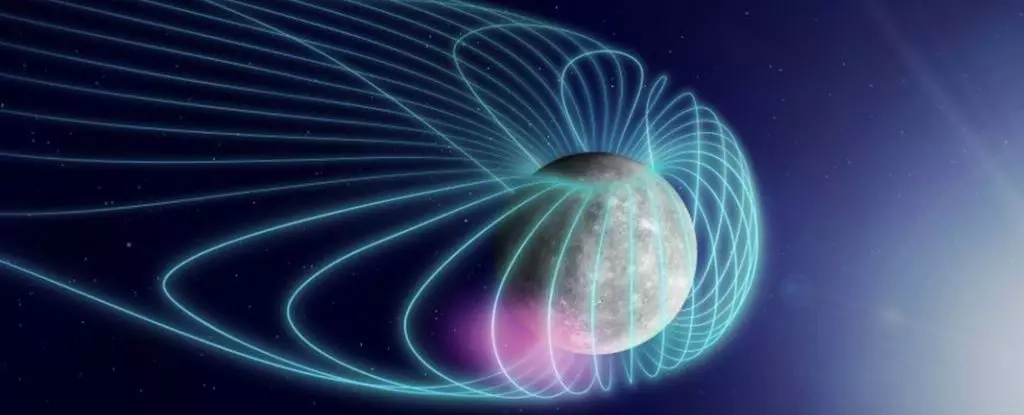

In the vast expanses of space, planets with magnetospheres generate a mesmerizing phenomenon known as chorus waves. Resembling the delightful chirping and whistling of birds at dawn and dusk, these ethereal sounds have been detected on celestial bodies such as Earth, Jupiter, Saturn, Uranus, and Neptune. Surprisingly, recent research led by astronomer Mitsunori Ozaki of Kanazawa University has uncovered the existence of these enigmatic chorus waves encircling Mercury, a desolate world that stands alone in close proximity to the scorching Sun. This discovery is particularly intriguing because Mercury lacks the magnetic field and dense atmosphere possessed by other planets where these waves have been observed. Furthermore, it offers valuable insights into the magnetic environment surrounding Mercury and the potential influence of solar wind on planetary magnetic fields.
Compared to its planetary peers, Mercury presents itself as a barren and austere mass of rock, bereft of a significant atmosphere. Its proximity to the Sun subjects it to incessant radiation and the relentless solar wind. However, beneath its seemingly inhospitable exterior, Mercury conceals a trove of mysteries waiting to be unraveled. Earlier this year, scientists uncovered the presence of auroras on Mercury, despite its feeble magnetic field and meager atmosphere. Even before this revelation, researchers speculated that chorus waves might exist within the Mercurian magnetosphere. These waves emerge when energetic electrons become trapped along a planet’s magnetic field lines, producing plasma waves. By converting these waves into audible sounds, scientists gain valuable information about the movements and characteristics of the electrons.
Our understanding of Mercury’s cosmic habitat remains incomplete due to sporadic and scarce exploration efforts. Revelations about its magnetic field date back to the 1970s when the Mariner 10 mission conducted observations. However, scientists yearned to bridge the knowledge gaps. The BepiColombo mission, launched in 2018, aims to fill these voids with the help of an instrument called Mercury Magnetospheric Orbiter (MIO). MIO specifically focuses on studying the unique Mercurian magnetosphere. Although the instrument has not yet entered orbit around Mercury, it has conducted flybys in 2021 and 2022, enabling the collection of valuable magnetic field data. Within this data, the researchers made a groundbreaking discovery – clear evidence of whistler-mode waves permeating Mercury’s magnetosphere.
However, the peculiar nature of Mercury added an additional layer of intrigue to these findings. The whistler-mode waves were only detected in a small region of Mercury’s magnetosphere, known as the dawn sector. This revelation suggested the existence of a physical mechanism that either promotes the formation of chorus waves exclusively in this sector or suppresses them in other areas. To shed light on this enigma, the research team employed modeling and simulations. Their analysis revealed that the transfer of energy from electrons to electromagnetic waves occurs more efficiently in the dawn sector, leading to the generation of these captivating whistles.
In order to delve deeper into the intricacies of these chorus waves, further observations and analysis will be required. The initial detection of these waves serves as a foundation for the researchers to carefully plan future investigations, culminating in the orbital insertion of MIO around Mercury in 2025. The scientists assert that unraveling the spatiotemporal properties of electron-driven chorus waves on Earth and Mercury remains an essential piece of the puzzle.
The discovery of chorus waves encircling Mercury provides a glimpse into the lesser-known aspects of the solar system. Despite its barren nature and lack of a robust magnetic field, Mercury enchants observers with its enigmatic auroras and now the ethereal sounds of chorus waves. By examining the relationship between the solar wind and planetary magnetic fields, scientists hope to expand our understanding of the extraordinary phenomena that shape the universe. As future missions unfold and technology advances, the secrets of Mercury and other celestial bodies will continue to be unraveled, offering us a more comprehensive understanding of the wonders that exist beyond our home planet.
A groundbreaking expedition led by an international research team, featuring esteemed scientists from the University…
The pursuit of coherent control over wave transport and localization stands as a monumental challenge…
In recent astronomical explorations, researchers have unearthed a striking phenomenon emanating from a distant corner…
The quest for sustainable practices within the chemical industry is more critical than ever. Researchers…
In the complex interplay of human health, the relationship between the gut and the brain…
The relentless drive for sustainable energy solutions has fueled remarkable advancements in solar technology, with…
This website uses cookies.